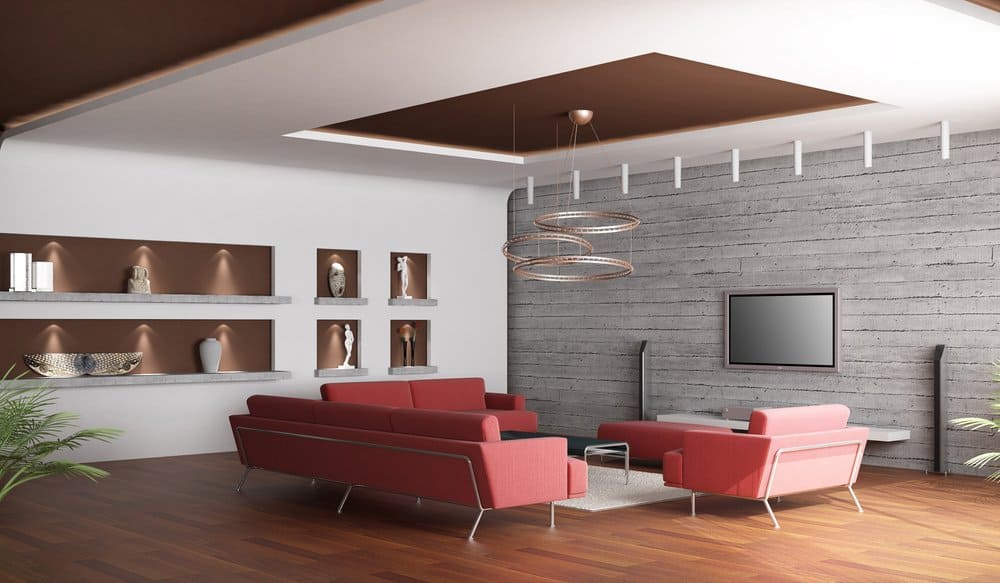
The trend of flat and simple ceilings is now outdated. People nowadays are eyeing products that not only make the typical flat ceiling look aesthetic but also serve other purposes. So the recent surge of PVC tiles ceilings, POP ceilings,s and various other types of false ceilings have given people the option to embellish the beauty of any space whether it be an office, commercial complex, residential complex, or theatre.
So what exactly is a PVC tiles ceiling and how does it benefit your home? What is the possible cost involved? Here’s a detailed study on everything you wanted to know about PVC panels for your ceiling.
What Are False Ceilings?
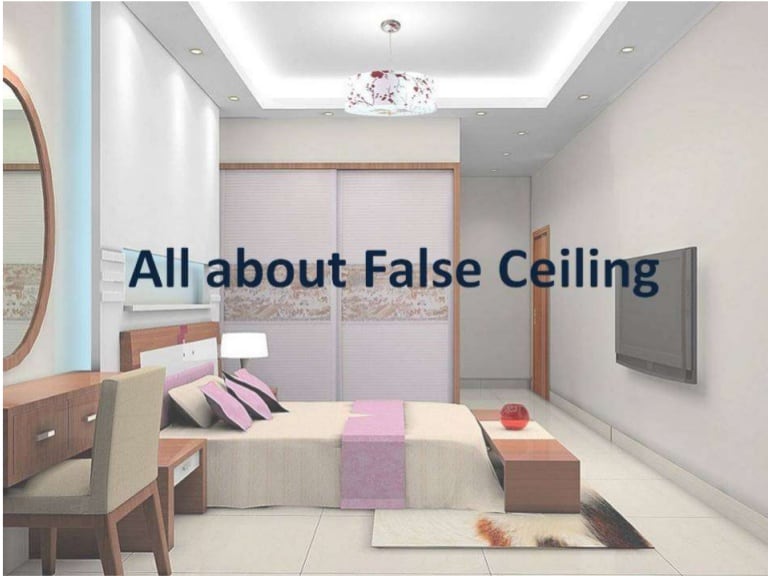
False ceilings, also known as dropped ceilings or suspended ceilings, are secondary ceilings that are hung below the main ceiling with the help of suspension cords or struts. These ceilings are crafted from a wide range of materials such as,
- POP (plaster of Paris)
- Gypsum board
- PVC tiles
- Asbestos sheets
- Particleboard
- Aluminum panel
- Wood, etc.
Why Do You Need False Ceiling ?
The topmost and the most important part of a building is the roof offering protection from the elements such as wind, high or low temperatures, snow, sunlight, and rain. Any residential and commercial building is incomplete without a proper roof. They not only improve the aesthetic appearance and proportion of interior spaces but also serve many other purposes.
- They act as heat insulators.
- They help in hiding ducts and other structural elements that hinder the beauty of the room.
- They act as an acoustic barrier to reduce echo.
- They perform as an antimicrobial element.
What Is A PVC False Ceiling?
PVC false ceilings are made of polyvinyl chloride strong, factory-manufactured, lightweight plastic material. They are often used as a cladding material, in the ceilings of residential and commercial buildings, because they can be built in various designs, colors, sizes, and lengths.
Each PVC panel has a hollow core with a shiny surface. PVC false ceilings are similar to gypsum false ceilings, as they both are waterproof and are more effective and durable in high moisture areas, such as balconies, bathrooms, and basements.
PVC False Ceiling & Advantages
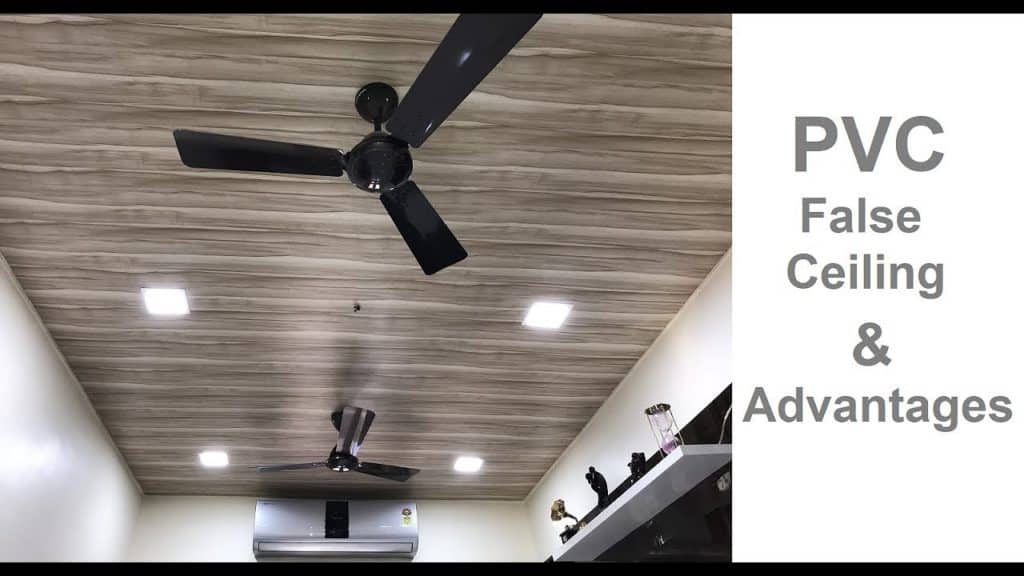
The upsides of having PVC tiles ceiling are
- High durability
- Easy installation
- Easy maintenance
- Lightweight
- Waterproof
- Detachable
- Termite-proof and Fire-retardant
- Cost-effective
High Durability
- Last for years without bending or warping
- Doesn’t get brittle with time
- Less likely to get damaged while installing
Easy Installation
- Installation is extremely easy
- The installation process doesn’t make the room dusty and dirt
- Cut and trim the PVC false ceilings without great difficulty and mess
- Installed and fitted using invisible screws
Easy Maintenance
- Does not need any varnishing, special coatings, or painting for routine maintenance
- A quick wipe with a clean damp cloth
- Use household cleaners to wipe to keep them new and shiny
Light-Weighted
- One of the lightest false ceiling materials
- As a result, it becomes extremely easy to handle, transport, and install them.
Waterproof
- Does not absorb water
- Eliminate the dampness from rooms
- Do not allow mildew and mold growths
Detachable
- Drilled in the frame using screws
- Unscrew them as and when required
Termite-Proof And Fire-Retardant
- Unaffected with termite attacks
- Control the spread of fire with their insulating properties
Cost-Effective
- Relatively reasonable
- Range increases with additional elements and surface treatments
PVC False Ceiling : Disadvantages
The downsides of PVC tiles ceiling are
- Plastic look
- Less heat resistance
- Releases chlorine gas
Plastic Look
- Gives a plastic look that might not suit the taste of some people
- Surface treatment to the PVC false ceiling panel can help you overcome this problem and get the desired look and false ceiling color of the PVC false ceiling design.
Less Heat Resistance
- Not an ideal choice for outdoor ceilings as they get damaged when exposed to high heat
- A suitable option for indoor living room or bedroom with energy-efficient LED light
Chlorine Gas
- Cannot be used in the kitchen as they release chlorine
Comparison: PVC Tiles Ceiling vs POP False Ceiling vs Gypsum Ceiling
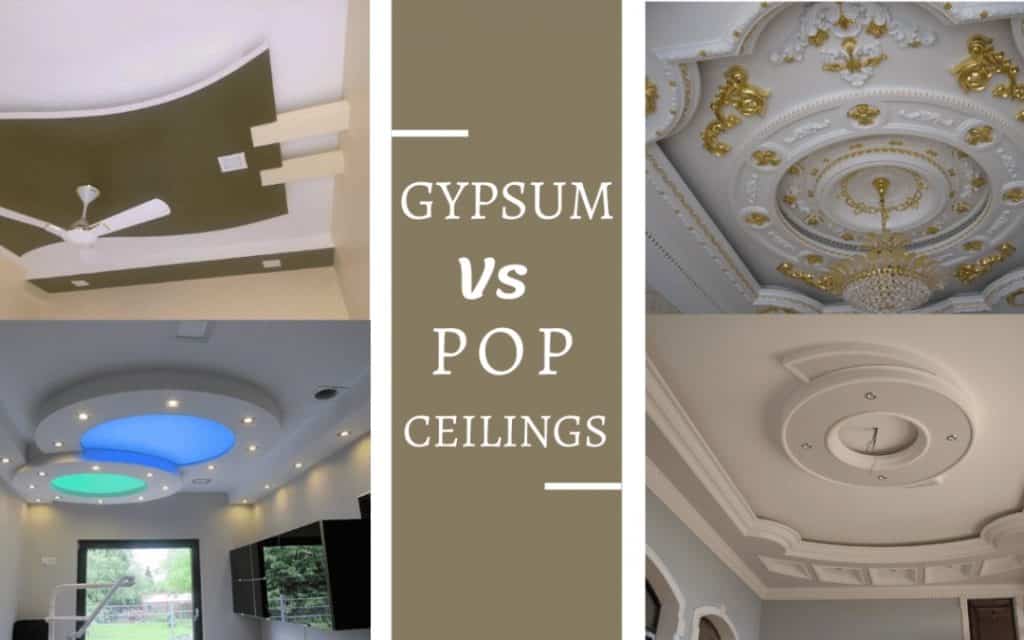
Let us see a comparison of the most common types of false ceiling in the table given below :
| Specification | PVC | POP | Gypsum |
| Durability | 25-30 years | 15-20 years | 15-20 years |
| Installation time | Minimum | Maximum | Medium |
| Removal ease | Easy | Non-removable | Difficult |
| Heat/Fire resistance | Poor | High | High |
| Weight | Light | Heavy | Medium |
| Decorative impact | Extreme | Moderate | Lowest |
| Waterproof | Yes | No | Yes |
| Moisture resistance | High | Low | Moderate |
| Aesthetic flexibility | High | Low | Moderate |
| Toxicity | Very high | Zero | Very low |
| Recyclable | No | Maybe | Maybe |
| Price | Lowest | Moderate | Highest |
| Insulation | Yes | Yes | Yes |
| Acoustic barrier | Yes | No | Yes |
| Impact resistance | Yes | No | Yes |
PVC False Ceiling: Pricing
The basic PVC panels for ceiling sheet price by two major brands-
- Armstrong PVC Panels for Ceiling Rate Range: 100-140 rs. per square feet
- USG Boral PVC Panels for Ceiling Price: Rs 95/square feet
The price of false ceiling / false ceiling price (PVC) after various surface treatments-
| Surface Treatment | Minimum Price (Rs./sq feet) | Maximum Price (Rs./sq feet) |
| Coated | 45 | 95 |
| Color coated | 38 | 120 |
| Film-coated | 32 | 125 |
| Galvanized | 60 | 100 |
PVC False Ceiling: Design Ideas
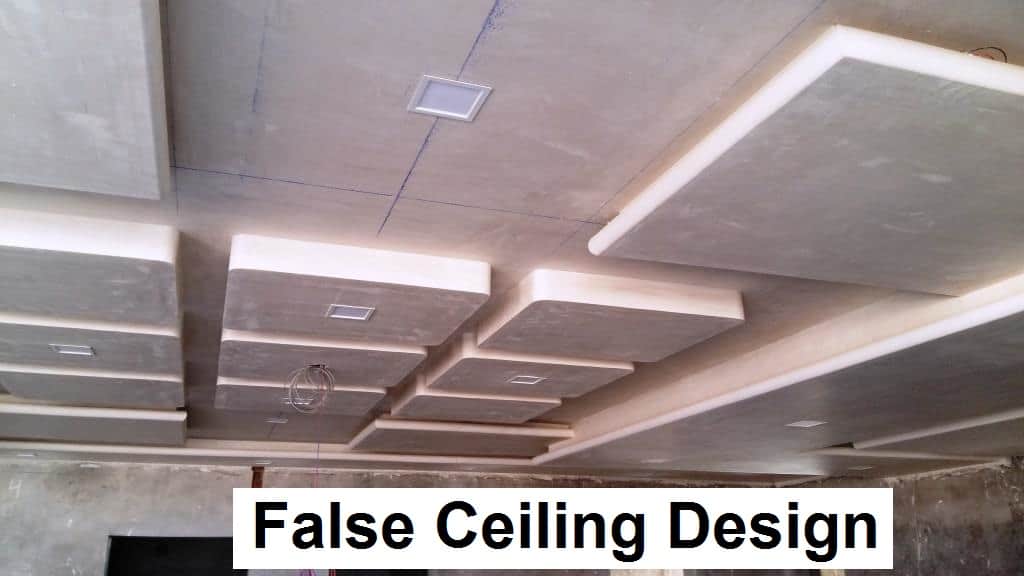
- Minimalistic PVC panels for ceiling suspension
- Luxury PVC panels for ceiling design in bathrooms
- Glowing PVC panels for ceiling design in bedrooms
- Geometrical PVC tiles ceiling designs
- Use PVC cornices to unite modernity with tradition
Final Thoughts On PVC Tiles Ceiling
PVC tiles ceilings prove ideal ceiling solutions for commercial as well as residential spaces such as offices, stores, garages, toilets, living rooms, bedrooms, and halls. But they work well only if the following conditions are taken into consideration:
- They are well constructed and maintained properly with time
- Proper floor to ceiling height is maintained
- The material is chosen according to the type of ambiance required
- According to the climatic considerations
PVC is a lightweight and moisture-resistant ceiling material. The detailed comparison table that describes the installation, application, pricing, and other details of PVC, POP, and Gypsum false ceiling materials will help you make the right decision for false ceiling solutions.
PVC False Ceilings FAQs
1. What is a PVC false ceiling ?
PVC false ceilings are made of polyvinyl chloride strong, factory-manufactured, lightweight plastic material. They are often used as a cladding material, in the ceilings of residential and commercial buildings, because they can be built in various designs, colors, sizes, and lengths.
2. Which false ceiling is better: PVC or pop ?
Features of PVC tiles ceiling- High durability, easy installation, easy maintenance, lightweight, waterproof, detachable, cost-effective, termite-proof, and fire-retardant.
Features of a POP ceiling- Smooth finish, customizable surface, easy to construct, and lightweight.
3. What do you understand about a false ceiling? Describe in brief different types of false ceilings ?
False ceilings, also known as dropped ceilings or suspended ceilings, are secondary ceilings that are hung below the main ceiling with the help of suspension cords or struts. They not only improve the aesthetic appearance and proportion of interior spaces but also serve many other purposes. These ceilings are crafted from a wide range of materials such as,
4. Should I install a false ceiling ?
Apart from offering protection from the elements such as wind, high or low temperatures, sunlight, snow, and rain, PVC panels for ceilings improve the aesthetic appearance and proportion of interior spaces. The other benefits of PVC tiles ceiling are






